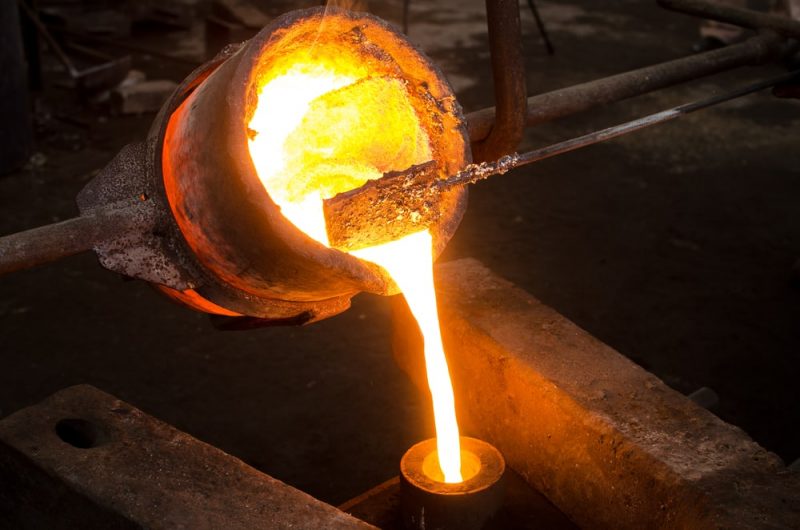The fusion It consists of a change of state of a matter from a solid to a liquid state. This type of transition occurs when the temperature that solid matter acquires increases to a certain temperature called the melting point. For example: the melting temperature of helium is -272 ° C.
When this point is crossed in the reverse direction, that is, when the temperature of a liquid is lowered until it reaches its freezing point (often equal to the melting point but with the opposite sign), the liquid solidifies or freezes, and the opposite effect occurs. When talking about solidification, it must be taken into account that for this process to occur it is also necessary to increase the pressure of the liquid.
Melting point
The melting point It is the temperature at which a solid substance turns into a liquid. This property depends on the pressure and is characteristic of each substance.
Thus, the melting point can be used to identify and determine the degree of purity solids, because when impurities are found, the melting point of a compound drops significantly.
The states and the importance of their changes
The solid state and liquid are the two states in which objects are perceptible by the sense of touch:
Solids are characterized by being resistant to changes in shape and volume, with their particles located closely together and organized in most cases.
Liquids, on the other hand, have a fluid and constant shape over a wide pressure range. In most cases they are shaped like the container that contains them.
The differences in the characteristics of each state of aggregation make it so valuable for humans to be able to move from one to the other by means of a change in temperature or pressure, and in some cases both.
Foundry

There are many areas in which fusion is used, but among all of them one stands out, which is that of metallurgy.
Casting is the process by which metals or other compounds change from a solid to a liquid state, usually to be later introduced into a cavity where they solidify and acquire a new shape to something that in its solid form there would have been no way to modify it.
For that, sometimes they must be done chemical processes that allow reaching very high temperatures, which these foundries demand.
Fusion examples
Here is a list of examples of melting processes, with different substances and the temperature at which they melt.
| Helium melting temperature, -272 ° C. |
| Hydrogen melting temperature, -259 ° C. |
| Melting of ice into liquid water, when the temperature is 0 ° C. |
| Nitrogen fusion, when it reaches -210 ° C. |
| Fusion of arsenic, when it reaches 614 ° C. |
| Chlorine melting temperature, -101 ° C. |
| Bromine fusion, when it reaches -7 ° C. |
| Melting of osmium, when the temperature is 3045 ° C. |
| Transformation of gold into liquid, at 1064 ° C. |
| Molybdenum melting at 2617 ° C. |
| Zirconium melting temperature, 1852 ° C. |
| Francium melting temperature, 27 ° C. |
| Boron melting at 2026 ° C. |
| Argon melting temperature, -189 ° C. |
| Radon melting, when it reaches -71 ° C. |
| Transformation of ethanol into liquid, at -117 ° C. |
| Neon melting temperature, at -249 ° C. |
| Chromium melting at 1857 ° C. |
| Formation of liquid uranium, at 1132 ° C. |
| Lutetium fusion at 1656 ° C. |
| Fluorine melting, when it reaches -220 ° C. |
| Mercury melting temperature, at -39 ° C. |
| Melting temperature of oxygen, at -218 ° C. |
| Fusion of stainless steel, at 1430 ° C. |
| Chloroform melting at 61.7 ° C. |
| Fusion of gallium, when it reaches 30 ° C. |
| Rubidium melting temperature, 39 ° C. |
| Tungsten melting temperature, 3410 ° C. |
| Phosphorus melting temperature, 44 ° C. |
| Potassium melting at 64 ° C. |
